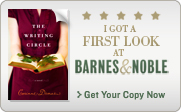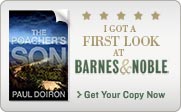Friday, June 26, 2009
Modernism and the Harlem Renaissance by Houston A. Baker, Jr.
In this monograph, Houston Baker argues that the Harlem Renaissance does not constitute a "'failure' to produce vital, original, effective, or 'modern' art in the manner, presumably, of British, Anglo-American, and Irish creative endeavors" (xiii). Instead, Baker makes the case that African American art, starting with Up From Slavery works against the minstrel mask to create oratorical mastery from "inside the while world's nonsense syllables" (25). I found Baker's readings of Paul Laurence Dunbar's poetry and Charles Chesnutt's The Conjure Woman and his insistence on the importance of finding a way to convey sound persuasive. Finally, Baker contends that the "mastery of form" and the "deformation of mastery" constitute two strategies employed by various artists as they work against the mask of minstrelcy to create the Harlem Renaissance.
Labels:
criticism,
modernity,
race,
United States
Romancing the Shadow: Poe and Race edited by Gerald Kennedy and Liliane Weissberg
This collection contains nine chapters on various aspects of race in Poe's work. The Narrative of Arthur Gordon Pym is frequently discussed, as are "Murders in the Rue Morgue," "The Gold Bug," and "Hop Frog." While the authors have many different views about how Poe works with race (Terence Whalen proposes that Poe espouses an "average racism" and avoid polemics in order to be popular with a large audience, whereas other readers find Poe to be deeply racist and to be taking stances on slavery through readings of stories and texts that aren't explicitly racialized), I found Whalen's, Rowe's (Poe and imperialism), and Kennedy's (Poe and Douglass) chapters to be the most persuasive. Many of the chapters have a strong cultural studies slant and are as much about the antebellum US as they are about Poe. Many chapters also respond to Morrison's Playing in the Dark and the challenges it makes to find the Africanist presence in Poe.
Saturday, June 13, 2009
The Origins of the English Novel by Michael McKeon
After a very anxious introduction justifying a dialectic approach to the history of the novel, added for this new edition, this book begins with Ian Watt's The Rise of the Novel. Although McKeon finds Watt's argument (that the novel, identified by its use of formal realism) relatively persuasive, he contends that Henry Fielding's texts work against this argument: these works owe more to romance than to formal realism. In response, McKeon takes a new perspective. He claims that the novel rises out of the culture trying to work out its relationship to the categories of truth and virtue. He identifies a dialectical process with a double reverse (that is, romance, then empiricism, and then skepticism), and, in the first half of his book, shows how this framework applies to the question of truth (addressing 18th century concerns about fiction and genre) and to the question of virtue (ought a novel to provide moral instruction). Then, in the second half of the book, McKeon gives readings of Don Quixote, Pilgrim's Progress, Robinson Crusoe, Gulliver's Travels, Pamela, and Joseph Andrews, fitting these works into the framework he established in the first half. There's a lot in here about the relationship of the novel to romance, and McKeon tends, in the first half, to start very early (with Classical literature) and give a rapid and spotty overview until he reaches the 17th century. I found his reading of Robinson Crusoe very persuasive.
Subscribe to:
Posts (Atom)





